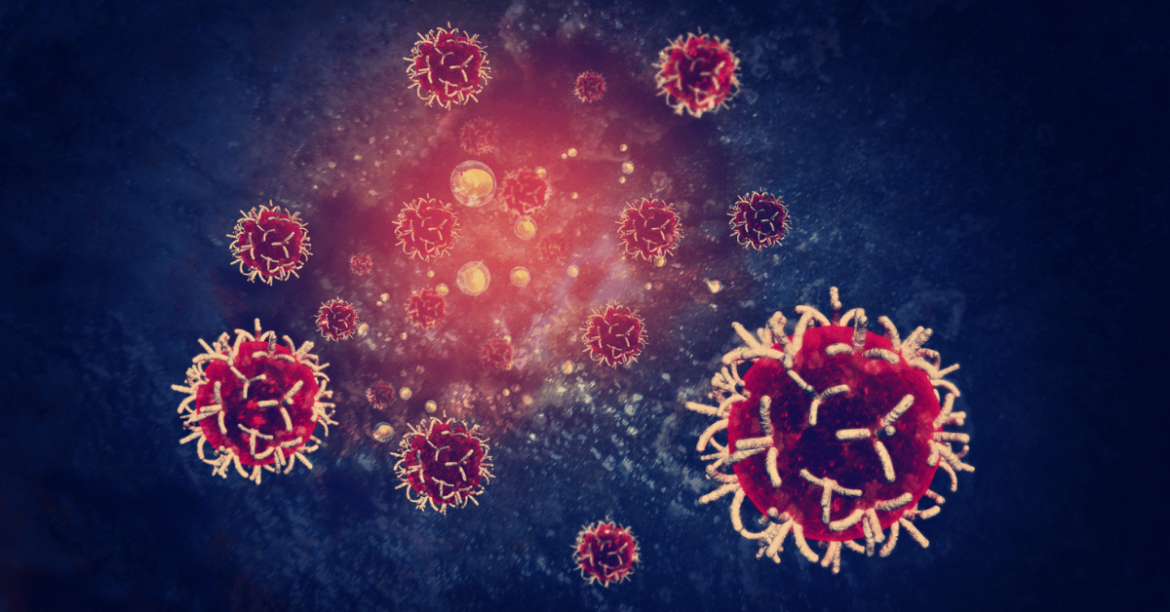The path to aging gracefully is often paved with unexpected and unforeseen challenges. One such challenge comes in the form of pebbles that carry the weight of a boulder, otherwise known as shingles!
The silent intruder lurking beneath layers of human biology is the painful sensation that strikes older adults the hardest!
Today, let us look under the microscope to understand the complications of shingles in seniors, its causes, symptoms, and most decisively, how to lessen its painful burden.
What exactly are shingles?
The term ‘shingles’ is essentially a sugarcoated version of another name people do not want in their vocabulary. Otherwise known as ‘herpes zoster,’ it is a common skin condition and viral infection of the nerves; the chickenpox virus reactivates that.
Did you know:
- People who have chickenpox are at risk of having shingles.
- At least 99% of Americans born before 1980 had chickenpox (meaning they are at risk of having shingles).
- Around 1 million people in the USA develop shingles, and 1/15 people, including older adults, will likely get it again.
- At least 50% of new shingles cases in the US are among seniors (60+).
- Herpes zoster (shingles) is about 33% more common among women.
- At least 1 in 3 Americans will have shingles in their entire lifetime.
- Postherpetic neuralgia (PHN), which is nerve pain, is the most common problem of shingles.
- 10% -18% of people with shingles develop PHN.
- Shingles can lead to vision loss.
- The most common symptoms include chills, headaches, and, occasionally, an upset stomach.
Are shingles dangerous for elderly individuals?
It has been reported that at least around 100 people in the US die from shingles. While this is very rare, shingles can be dangerous for seniors with other underlying health conditions that are often overlooked. As per the CDC (Centers for Disease Control and Prevention), shingles can also lead to:
- Infections in the lung which is known as pneumonia.
- Severe hearing difficulties.
- Brain inflammation is also known as encephalitis.
In addition, shingles can also lead to stroke, and some studies suggest that dementia can also result from shingles. This can be due to the blood flow disruption to the brain, which results in a stroke and even changing some brain functionalities.
What causes shingles in elderly?
The simplest way to say this is that the chickenpox virus is the sole reason for shingles. Let us look at how this causal effect occurs in the human body!
- The aging process can lead to a weakened immune system in the body. As a result, seniors are more prone to suffer from shingles (because the virus lays dormant in the body).
- Chickenpox is a contagious disease caused by the Varicella-Zoster Virus. The root cause of shingles is that the virus remains dormant in nerve tissue after chickenpox, and it can resurface years later (during elderly years) in life when the immune system weakens.
- Additionally, stress and chronic illness are known to contribute to reactivating the Varicella-Zoster virus.
5 Shingles side effects in elderly
Here is a list of side effects that shingles is known to cause, particularly in older adults:
- The effects of shingles on elderly individuals can be long-lasting, leading to ‘Postherpetic Neuralgia’ (PHN) in some cases. It is when the nerve fibers get damaged due to an outbreak of shingles in the body.
- As a result of PHN, seniors will experience extreme pain where the rash is; even after the healing period, the pain is known to last and takes longer to lessen.
- The common side effect is the rash. However, the inflammation can vary from person to person and look even different. The rash can be in the form of blisters, scabs, and crusting and can often form over the temple of the head.
- Shingles can lead to other complications like hearing loss, upset stomach, decreased physical strength, bacterial skin infections, vision problems, and neurological disorders.
- This pain and discomfort can lead to a low quality of life in seniors, who are already experiencing a transition in life due to aging.
5 Signs of singles elderly to look out for!
Now that you know the main side effects of the painful intruder, here are the signs to look out for!
- A general rash can be an early sign of the virus. In general, shingles are known to form around the torso or the middle part of the body, including the back.
- This rash can often be very itchy and cause discomfort. While most people may take it as a skin condition brought on by allergy, it can be a sign of shingles.
- When the rash becomes too sensitive to touch, it is followed by a burning sensation.
- Small blisters or light inflammation around the itchy or rash area, followed by numbness or a tingling sensation.
- During such a rash period, if the eye or vision is not fully functional, it means eye pain, swelling, redness, and vision loss.
Home treatment for shingles may help
Shingle vaccinations and ointments help immensely as long as medical professionals prescribe them. Though it may not cure or altogether remove shingles from the body, try the following home treatments to ease the pain that comes with the painful intruder!
- Essential oils like tea tree, eucalyptus, or chamomile have antibacterial and anti-inflammatory properties. It may help in hastening the healing process.
- Cold compressions and cold baths are often helpful, as they can reduce itchiness and inflammation.
- Oat baths can be helpful, according to some studies. FDA-approved colloidal oatmeal is a harmless and effective treatment because the active ingredients include flavonoids and saponins (which have antiviral properties).
- A good diet promotes a healthy immune system in the body. A proper diet plan, aided by consuming green vegetables, promotes a healthy lifestyle, leading to a more robust immune system.
- Vitamin supplements are another way to boost immunity, especially in older adults over 50 and above. Older adults often lack vitamin D due to lack of sun exposure. Vitamin D has been linked to strengthening immunity in older adults.
Stay active; stay rejuvenated
If you have chickenpox, there is a high chance for shingles to pop up, especially during adulthood! As it is more common for older individuals, it is crucial to maintain an active lifestyle to help strengthen immunity! Look at the following articles to learn how to keep your immunity strong well into your senior years.
- Martial arts for seniors
- Core strength exercises for seniors
- A healthy diet plan
- Is a keto diet enough to boost immunity?
Living in retirement communities can help!
Seniors in retirement are already learning to transition into a new life, and getting the shingles virus can make life even more challenging!
But one aspect of living in retirement communities, particularly assisted living or nursing homes, is that dedicated and trained professionals are there to help with such health problems. These retirement facilities employ professionals with knowledge regarding shingles and can help create meal plans that help boost a senior individual’s immunity.
Even in home care, one may be able to avail of such services. When you are looking for the right home care agency, inquire about whether the care providers are equipped to handle shingles cases in seniors.
Whether you are battling shingles or looking for the best service in retirement, it is good to have a solid financial safety net! So look at the related articles to better arm yourself with knowledge!
Key takeaways:
- Seniors are more likely to get shingles.
- While not severe or extremely dangerous, it can lead to death (which is rare).
- A strong immunity can help in battling shingles prevention.
Final thoughts
Shingles may be a terrible foe, but with early acknowledgment, swift action, and the support of modern medicine, its impact can be alleviated. But it is your immunity if you had to choose a weapon to fight the internal intruder!
A strong immunity is the best chance at fighting shingles! A strong immunity is the best way to ensure the body keeps the painful intruder at bay for as long as possible.
FAQs
How serious is shingles in the elderly?
While shingles in older adults are not life-threatening, they can cause severe discomfort (often pain) and should be taken seriously! Unchecked complications and lack of treatment can cause problems in the long term. It can range from physical scarring, vision loss, and nerve damage (peripheral neuropathy) to inflammation in the spinal cord (transverse myelitis), a rare neurological condition.
What triggers shingles in elderly?
Shingles is the aftermath of the dormant chickenpox. The varicella-zoster virus’ triggers shingles in old people, which is the same virus that causes chickenpox during childhood.
How long does shingles last in the elderly?
Shingles naturally lasts from 2 to 6 weeks in older adults. It can vary depending on numerous factors, and a person’s immunity is one of the most vital elements. Furthermore, the treatment plans, including medication prescribed by a medical professional, also matter.
What is the best treatment for shingles in the elderly?
Aside from medication, the best treatment for shingles is to ease the pain as much as possible. There are specific home remedies to ease the pain of suffering from shingles. It is advisable to get medication approved and prescribed by doctors. Antiviral drugs reduce the duration of the condition. Pain relievers help. Most importantly, keeping the ‘rash’ area clean also factors in.
What is the fastest treatment for shingles?
Antiviral drugs like Valtrex or Zovirax are considered to be effective treatments that work fast. However, depending on the severity of an older person’s shingles, it is advisable to consult a medical professional and have them prescribe the necessary medications.

